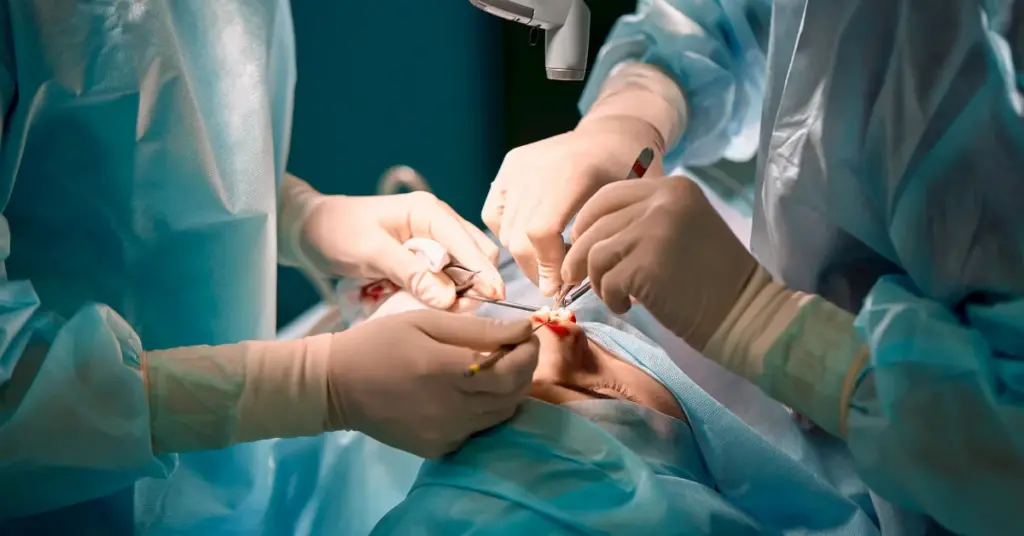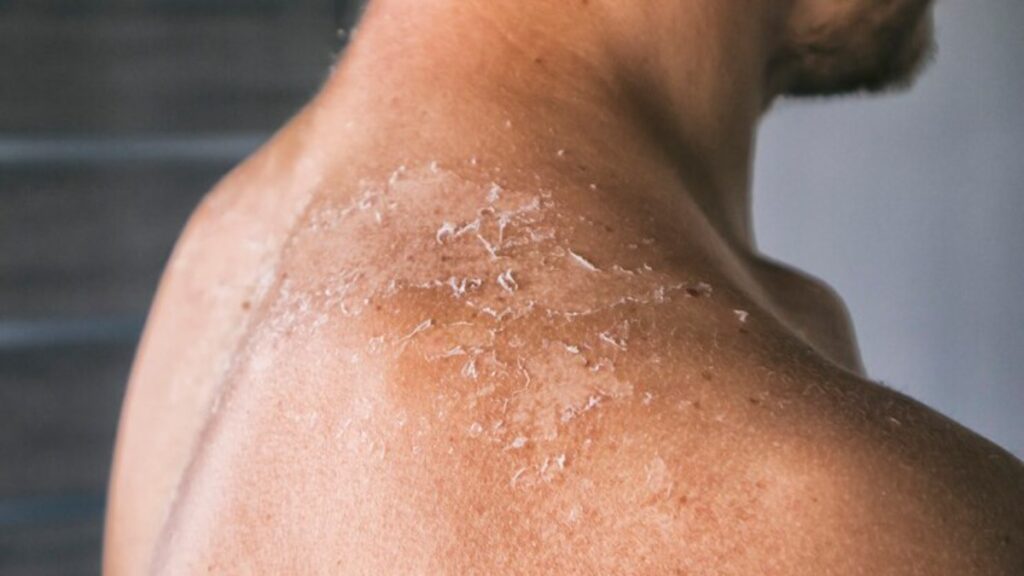Burn injuries can be devastating, both physically and emotionally. They often leave survivors with severe scars, disfigurements, and functional impairments that affect their quality of life. However, the field of reconstructive surgery offers a beacon of hope, providing burn repair with a second chance through advanced medical techniques. This blog delves into the remarkable world of reconstructive plastic surgery, highlighting its restorative potential and the profound impact it has on the lives of those affected by severe burns.
Table of Contents
Reconstructive & Repair Surgical Procedures for Burn Injury
Burn injuries often require surgical intervention to remove damaged tissue and promote healing. Three primary surgical procedures used to treat burn wounds are tangential excision, fascial excision, and amputation.
1 – Tangential Excision: Tangential excision involves the careful removal of necrotic tissue while preserving as much of the viable dermis as possible. Surgeons use a dermatome, a specialized surgical instrument, to shave off thin layers of dead tissue until a healthy, bleeding wound bed is achieved. This technique is crucial for preparing the wound bed for skin grafting, minimizing tissue loss, and promoting better cosmetic and functional outcomes. By preserving the dermis, tangential excision helps maintain the skin’s structure and elasticity, which is essential for effective healing and rehabilitation.
2 – Fascial Excision: Fascial excision is a more extensive procedure that involves the removal of all tissue layers down to the underlying fascia, a connective tissue layer that covers muscles. This method is typically used for deep burns where the skin and subcutaneous tissues are severely damaged. While this approach ensures the complete removal of necrotic tissue, it can result in more significant functional and aesthetic deficits. However, it is sometimes necessary to prevent infection and facilitate the effective closure of the wound with skin grafts or flaps.
3 – Amputation: Amputation is considered a last resort when burn injuries are so severe that they compromise the viability of a limb or extremity. This procedure involves the surgical removal of the affected limb to prevent the spread of infection and other complications. Amputation is usually performed when there is extensive tissue necrosis, and other reconstructive efforts are deemed insufficient to restore function or save the limb. Post-surgery, patients often require rehabilitation and prosthetic fitting to regain mobility and functionality.

The Role of Reconstructive Surgery For Burn Repair
Reconstructive surgery aims to restore form and function to parts of the body damaged by burns. It encompasses a wide range of procedures tailored to address the specific needs of each patient. The ultimate goal is to improve the patient’s quality of life by enhancing their physical appearance, restoring functionality, and boosting their self-confidence.
1 – Skin Grafting is one of the most common procedures in burn reconstruction. It involves transplanting healthy skin from one part of the body to the burn site. There are two main types of skin grafts:
| Split-Thickness Skin Grafts: | These involve taking the top layers of the skin (epidermis and part of the dermis) from a donor site. This type of graft is typically used for covering large burn areas and can help in quick recovery. |
| Full-Thickness Skin Grafts: | These involve taking all layers of the skin, including the epidermis and entire dermis, from a donor site. This type of graft is used for smaller areas where a better cosmetic result is needed, as it provides a more natural appearance. |
2 – Flap Surgery involves transferring living tissue along with its blood supply from one part of the body to another. This technique is essential for covering deeper wounds and restoring functionality. There are various types of flap surgeries, including:
| Local Flaps: | Tissue is moved from an adjacent area to cover the burn site. This technique is often used for small to medium-sized burns. |
| Regional Flaps: | Tissue is moved from a nearby region, often involving muscle and skin, to cover larger or more complex wounds. |
| Free Flaps: | Tissue is completely detached from its original location and reattached to a new site using microsurgical techniques. This method is used for extensive reconstructions and requires precise surgical expertise. |
3 – Tissue Expansion is a technique used to grow extra skin for reconstructive purposes. A balloon-like device called an expander is placed under the skin near the burn site. Over time, the expander is gradually filled with saline, causing the skin to stretch and grow. This newly grown skin can then be used to repair the damaged area, providing a more natural look and better match in texture and color.
4 – Scar Revision procedures aim to improve the appearance of burn scars and increase the functional capabilities of the affected area. Techniques include:
| Laser Therapy: | Lasers can reduce the redness and thickness of scars, making them less noticeable. |
| Dermabrasion: | This technique involves removing the top layers of skin to improve the texture and appearance of scars. |
| Injectable Treatments: | Steroid injections can reduce inflammation and improve the texture of scars, while fillers can help to smooth out depressed scars. |
The Psychological Impact of Burn Repair & Reconstructive Surgery
The benefits of reconstructive surgery extend far beyond physical healing. Restoring a burn survivor’s appearance and functionality has a profound impact on their psychological well-being. Improved self-esteem and confidence can significantly enhance social interactions and overall quality of life.
Reconstructive surgery often marks the beginning of a holistic healing journey for burn survivors. Alongside physical treatments, emotional rehabilitation plays a crucial role in recovery. Psychological support, including counseling and support groups, helps survivors cope with the emotional trauma of their injuries and fosters resilience.

The improved appearance and functionality achieved through reconstructive surgery facilitate social reintegration. Survivors feel more confident in social settings, reducing feelings of isolation and promoting a more active and fulfilling lifestyle. This positive change can also lead to better opportunities in education, employment, and personal relationships.
Technological Advancements in Burn Repair & Reconstructive Surgery
The field of burn repair and reconstructive surgery is continually evolving, driven by technological advancements and innovative research. Some of the latest developments include:
3D printing technology is revolutionizing burn repair and reconstructive surgery by creating custom implants and prosthetics tailored to the patient’s unique anatomy. This technology enhances precision and improves outcomes, providing more natural-looking and functional results. For instance, 3D-printed skin grafts can be designed to match the exact contours and pigmentation of the patient’s skin, significantly improving the aesthetic and functional outcomes.
Regenerative medicine, including stem cell therapy and tissue engineering, holds great promise for burn repair and reconstruction. Stem cells can promote healing and tissue regeneration, potentially reducing the need for extensive surgeries. For example, stem cell treatments can accelerate the healing of burn wounds, decreasing scarring and improving functionality. Tissue engineering aims to grow new tissues and organs in the lab, offering hope for more effective and less invasive treatments in the future. Engineered skin substitutes, created from a patient’s own cells, can provide a perfect match for grafting, reducing the risk of rejection and improving healing.
Robotic-assisted surgery and advanced microsurgical techniques allow for greater precision and control during complex reconstructive procedures. These technologies minimize surgical trauma, reduce recovery times, and improve overall outcomes for patients. Robotic systems enhance the surgeon’s dexterity and precision, making it possible to perform intricate procedures that were previously challenging or impossible. For instance, robotic systems can be used to repair delicate facial structures or reattach severed nerves and blood vessels, significantly improving both functional and cosmetic results.
Conclusion – Burn Repair & Reconstructive Surgery
When treating patients with thermal burns, the major surgical procedures are debridement/excision, grafting, and reconstruction. Debridement or excision involves removing necrotic tissue to prepare the wound bed for healing. Grafting, including skin grafts and tissue flaps, covers the wound to promote recovery and restore function. Reconstruction focuses on repairing and improving the appearance and functionality of burn-affected areas through advanced techniques like 3D printing, regenerative medicine, and microsurgery.
Burn care requires a multidisciplinary healthcare team, including surgeons, nurses, physical therapists, and psychologists, to address the comprehensive needs of burn patients. Each team member plays a vital role in ensuring optimal recovery and rehabilitation, emphasizing the collaborative effort necessary for successful burn treatment. Through these combined efforts, patients can achieve significant physical and emotional healing, demonstrating the profound impact of advanced surgical interventions in burn care.
FAQs – Burn Repair & Reconstructive Surgery
How does skin grafting work for burn victims?
Skin grafting transplants healthy skin from one part of the body to the burn site, promoting healing and restoring function and appearance.
What is the difference between tangential and fascial excision?
Tangential excision removes thin layers of necrotic tissue, preserving viable dermis, while fascial excision removes all tissue down to the fascia for severe burns.
How can reconstructive surgery improve burn scars?
Reconstructive surgery can improve burn scars through techniques like laser therapy, dermabrasion, and injectable treatments to enhance appearance and functionality.
What role does regenerative medicine play in burn treatment?
Regenerative medicine uses stem cell therapy and tissue engineering to promote healing, reduce scarring, and potentially grow new tissues for burn repair.
How does 3D printing benefit burn reconstructive surgery?
3D printing creates custom implants and skin grafts tailored to a patient’s anatomy, improving precision, functionality, and cosmetic results.
What should patients expect during recovery from burn surgery?
Recovery involves wound care, physical therapy, and sometimes psychological support. The process varies depending on the injury’s severity and the type of surgery performed.

